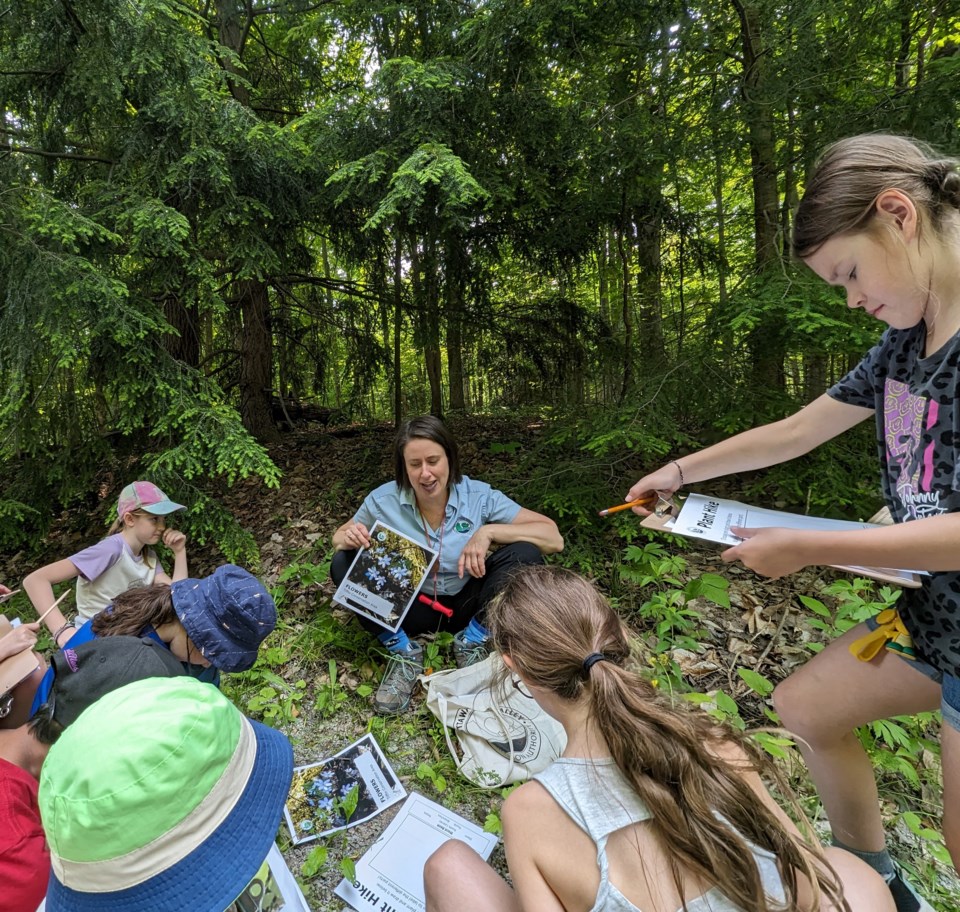In a world where digital distractions can cause disconnection from nature, an environmental educationist seeks to foster a deeper love for the outdoors through wildflowers.
“I came up with the idea and started marking flowers on a map over 10 years ago,” said Naomi Saunders, the manager of environmental education for the Nottawasaga Valley Conservation Authority (NVCA).
Her wildflower map is hand-drawn. It marks out the locations of various flowers at the Tiffin Centre, and it evolved in the summer of 2021 with the help of one of Naomi's colleagues – a flood operations field specialist, Taryn Arsenault.
“She worked on this flower guide when taking the Environmental Technology Advanced Sampling course at Georgian College. She did the research and the flower pictures, and put the guide together, using the map,” explains Saunders.
What was a rough map for personal reference has now turned into a useful aid for many, from botany enthusiasts and avid trekkers to educators engaging with Grade 3 students in their plant and soil curriculum. Additionally, the guide has become an essential tool for new programming initiatives, including a project supported by a grant from the Retired Teachers of Ontario.
One of the core aims of Saunders’ work is to instil a sense of belonging and connection to nature.
She said it's author Richard Louv's phrase "nature deficit" that best describes the experience of many people today.
“We really have a deficit of nature in our lives,” she said. “And if we don't get time out in nature, we don't connect with it; we don't connect with unfamiliar things, And then as we grow older, we'll not protect or love the things we don't know. So increasingly, people don't protect nature.”
The guide not only showcases the uniqueness of 19 flowers but also sheds light on their historical and cultural significance through storytelling that includes biblical references or associations with early settlers.
For example, a trout lily is so named because the leaves resemble the speckled trout fish.
“Of course, it is also important to note that all of these plants had Indigenous names before the pioneers and early settlers came over,” she said.
With one example, she emphasizes the critical role of flowers in the food chain.
“Hepatica is one of the first to bloom after winters because it has hairs that grow on its stems and the leaves curl around the flower protecting it from the frost,” she said. “It's one of the very first sources of food after a long winter; there are so many pollinators that are relying on these blooms. If it wasn't for pollinators, we wouldn't have most of the food, essentially.”
One of the programs Naomi and her team teach is about biodiversity. They draw attention to the fact that species are being lost.
“Oftentimes, we're losing plants that we don't even yet know what their medicinal purposes are,” she said. "If you have a plant that's an irritant, next to it is a plant that will cure it. The poison ivy, when it's in a naturalized area, grows next to a plant called jewelweed aka spotted-touch-me-not, which cools the irritation from poison ivy.”
With over 14 years of experience at the NVCA, Saunders’ journey to becoming an environmental educationist was sparked during her time as a student at York University, where she developed a fascination for native plants through a program focused on ornamental plants. Inspired by her newfound passion, she began seeking out and learning about different plant species wherever she went.
As Saunders looks to the future, she hopes that participation numbers return to pre-pandemic levels as the numbers dropped from 14,600 kids in 2019 to 7,000 kids in 2022. She also envisions expanding the guide to include additional volumes or editions by reorganizing the content chronologically.
The Tiffin Flower Map was first published in 2022. The guide is available online, and there are copies in the NVCA front office area for visitors. For more information on the Tiffin Centre, visit the website here.
